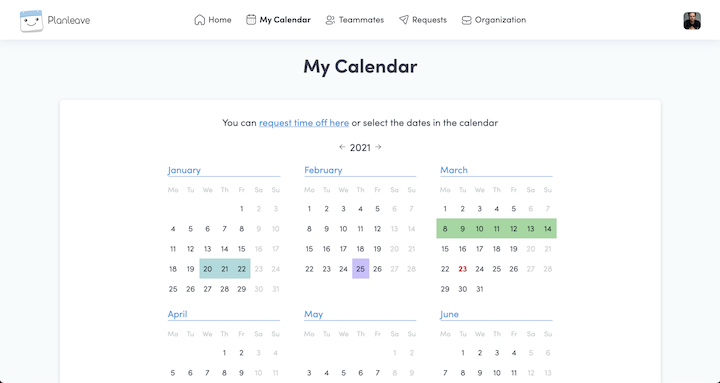In the summer of 2019, I started to build Planleave, a SaaS product to manage time off days in an organization. I did it as a side project while working full-time as a software engineer at Buffer. Three years later, in 2022, I sold it.
I’ve never worked harder on any side project than on Planleave.
When I start any project, I usually go through the first honeymoon phase of absolutely loving the idea, but that fades away quickly, and I usually stop at that point. Still, with this project, I kept going and added features, fully automatized sign-ups and billing, and talked to many potential customers.
I planned to continue investing in user acquisition through cold emails, organic content, etc., and I had complete trust that it would be helpful to many more people once it grew, but I decided to sell it.

Why did I sell my side project?
It was just too many things to juggle, and the potential success of my solo-founded side project was not at the top of the list. I’m a parent of two kids, I work full time, and I like to do other things beyond being at my desk programming.
On top of not being a priority, even if I could manage to make it more successful, the period while working full time and attending a growing functioning business, sounded a bit terrifying.
I thought, “Imagine that I get to 2000 USD / month. That’s around 1000 active users (2 USD / user). I can receive incidents about a 500 error on a peaceful Sunday evening with my family or in the middle of the night. Even real vacation time won’t be possible”.
Luckily, my full-time worker salary is way higher than the revenue in the early stage, so it didn’t seem very appealing. I know the future revenue might have been way more than my salary but I also suspected it was going to take me a lot of time.
Only a few people will recognize this, but I also noticed that it affected my performance in my full-time job. Sleeping less and spending more time programming beyond my responsibilities with Buffer was hard, and my mind needed to be fresher for my paid job.
Perhaps I could have taken it further with no kids in my 20s, but it doesn’t matter, I’m in a different stage of my life now, and it’s essential to keep my priorities straight.
When I realized this, my first intention was to close it, but I had invested so much time on it, and I had some active users, so I thought I could sell it to someone.
How I sold my side project
First, I contacted some friends and colleagues in the industry. If you don’t know anyone, that’s fine, my contacts weren’t interested, but they pointed me in the right direction: side projects marketplaces.
I signed up for a few of them, and I got lucky with Acquire.com, but I’d encourage you to try others; they’re usually free for you, like: Microns.io or SecondFounder.
I suggest drafting some basic information because you’ll probably receive many similar requests: more context about the business, competitors, why you’re selling it, etc.
Having the SaaS project fully set up was important so a new potential owner could take it and grow it with little technical involvement. Users could sign up on Planleave and upgrade with no manual intervention from my side.
Once you get an offer, don’t be afraid of negotiating. It’s important to have some revenue to sell your project, but even if you don’t, you can still get more than the original offer by negotiating a bit.
After a few emails with different people, the new owner found the project, so we went through the negotiation, and that was it.
I can’t share the exact amount, but as you can imagine at an early stage, it wasn’t life-changing. Still, I felt rewarded for my work and happy because I knew that the new owner would take it to a different level.
Conclusion
It was a tremendous adventure to create a SaaS product from nothing by myself and be able to sell it. I learned a lot about many different aspects of running a software business, especially outside my comfort zone of software development.
I’d encourage you to work on a side project if you’ve never done it. If it doesn’t take off or your priorities change, the sale might be a good closure to that journey, but you don’t need it to learn as much as you will.